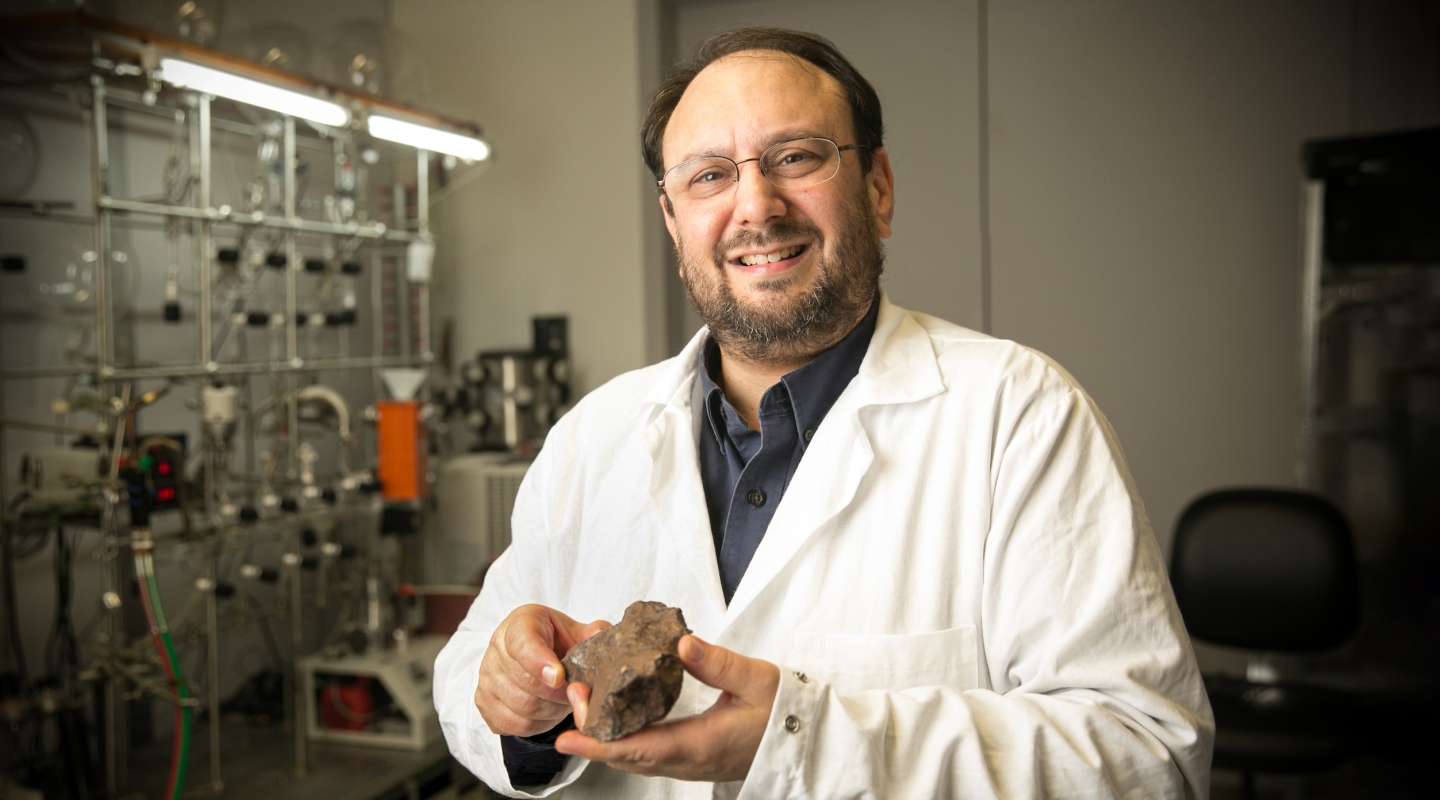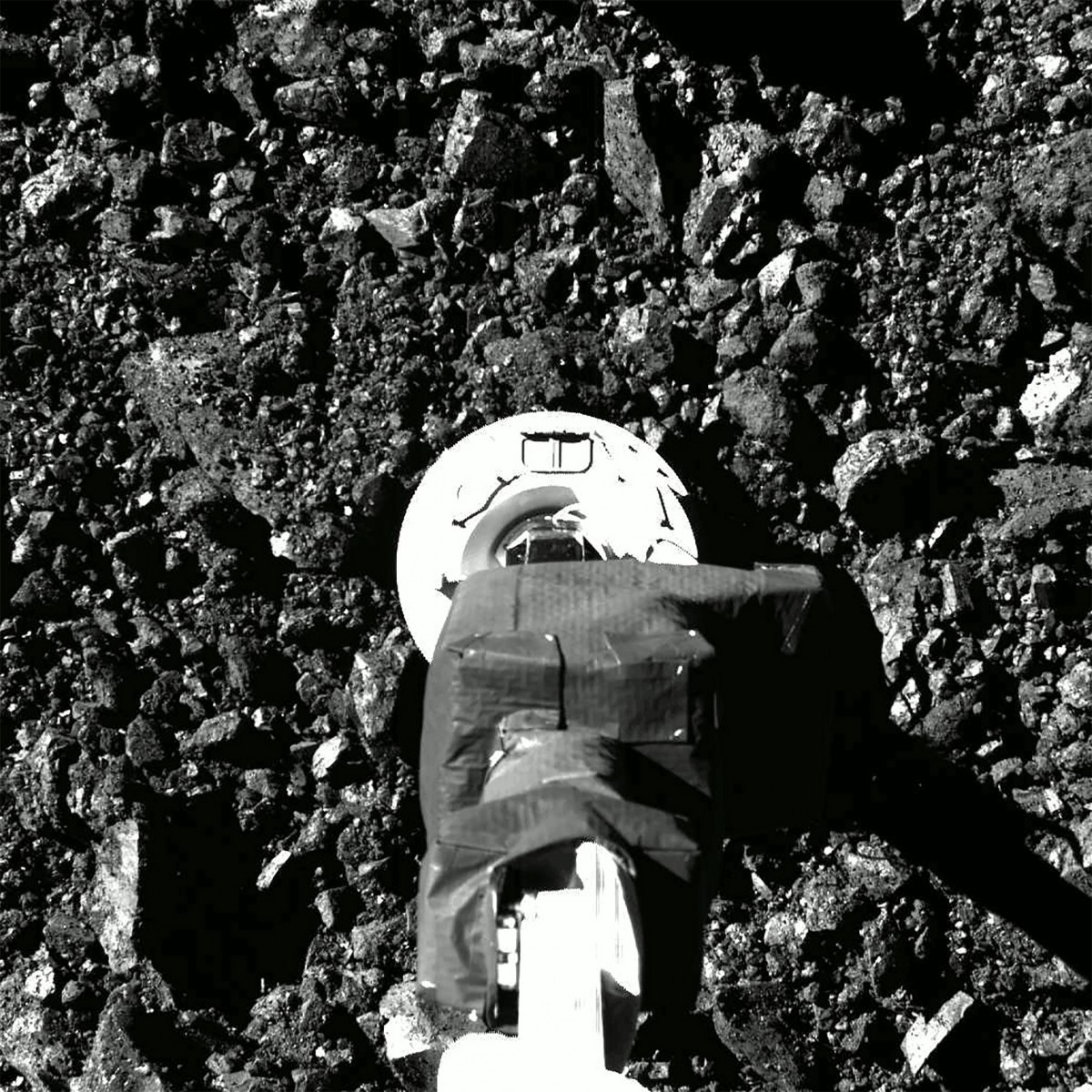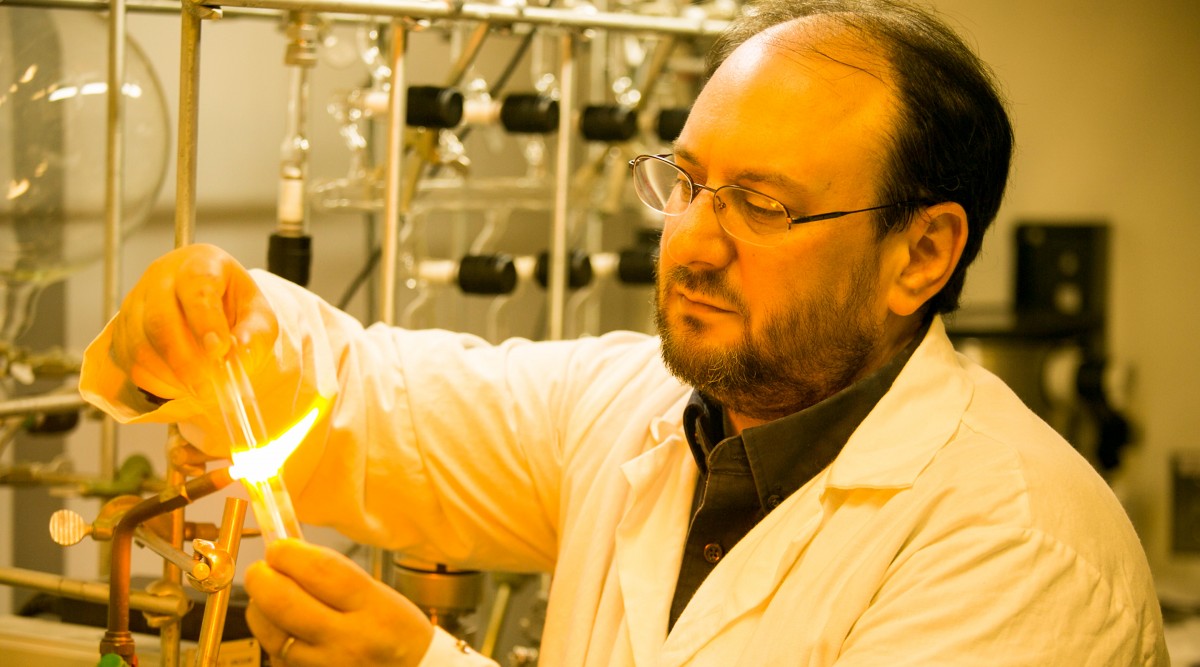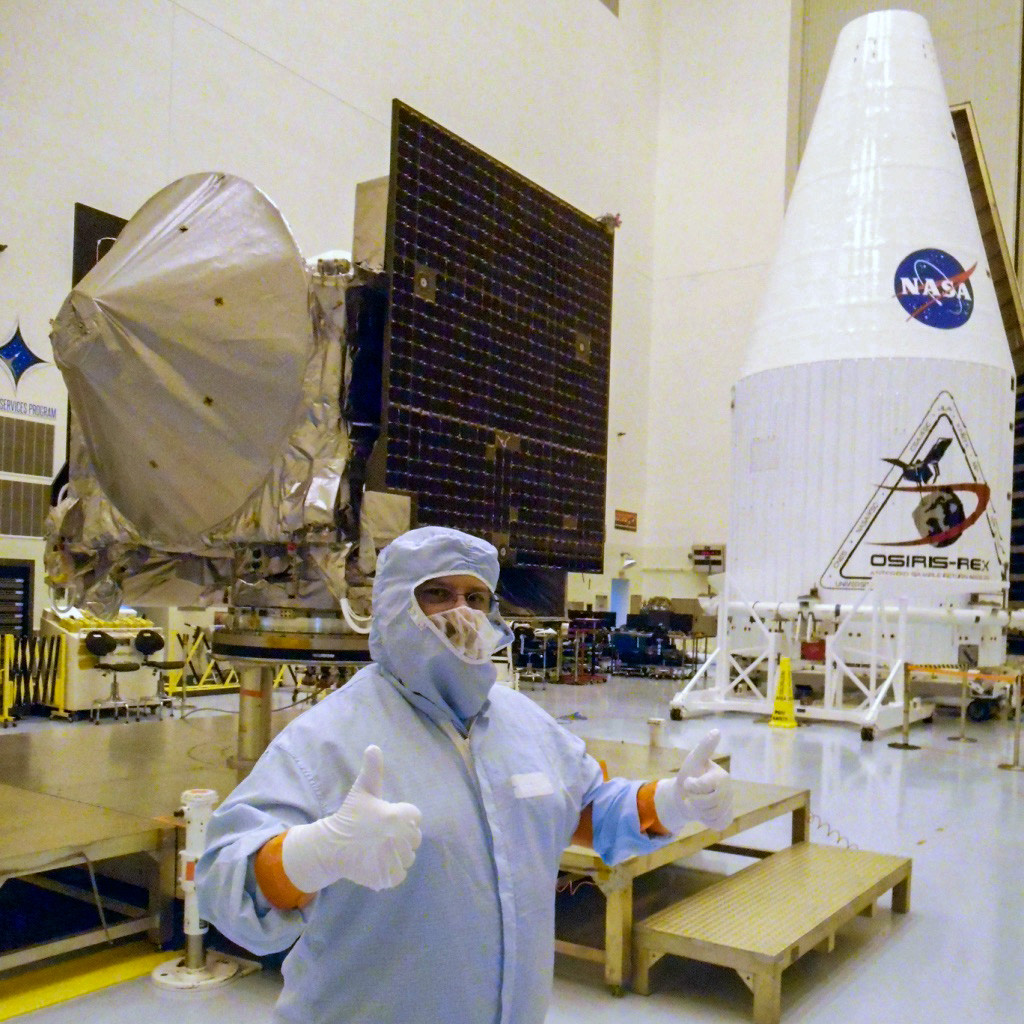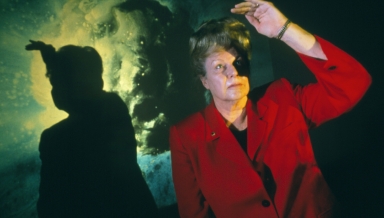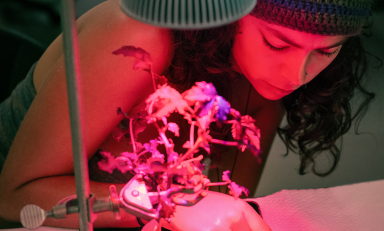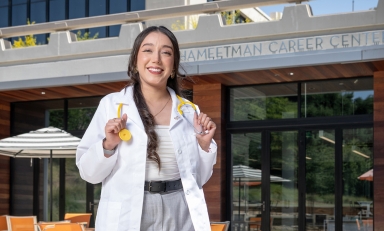Astrobiologist Jason Dworkin ’91 has devoted the better part of two decades to a NASA mission to the near-Earth asteroid Bennu. What will we learn when OSIRIS-REx arrives home next year?
When you’re sending a spacecraft the size of an SUV on a 200 million-mile journey to a tiny dot of an asteroid, there’s always a chance for disaster. When OSIRIS-REx reached Bennu safely in 2020, it was an emotional moment for Jason Dworkin ’91, senior scientist for astrobiology at NASA Goddard Space Flight Center in Greenbelt, Md., and project scientist for the OSIRIS-REx mission.
“I’d worked for so long, and I really understood the risks involved,” he says. “Bennu was a lot more dangerous, a lot rockier than we had anticipated, so we’d designed the mission for an asteroid that turned out not to exist.”
It was quite a feat, considering the asteroid is only 1,610 feet in diameter. The craft will land by parachute in the Utah desert on Sept. 24, 2023. Dworkin’s team will be the first to examine and then curate its extremely precious cargo. “Then the mandate is that the science team analyzes 25 percent of the sample to answer our 12 hypotheses and 50-some subhypotheses to fulfill our obligation to NASA,” says Dworkin. “The other 75 percent is archived so that other scientists around the world, even perhaps those not yet born, can analyze the sample using techniques perhaps not yet invented—asking questions that we don’t know how to ask yet.”
Named after an ancient Egyptian deity, Bennu was suggested by a 9-year-old boy from North Carolina who won the Planetary Society’s Name that Asteroid! competition in 2013. Dworkin well could have been that boy in the 1970s. “I was very much a child of Apollo and drew the Apollo launches in crayon,” he says. “I remember some of the missions, being born in 1969.” (He was supposed to arrive on the same day as the Apollo 11 landing, “but I was a little late—I’m always a little late.”)
Dworkin’s passions were perhaps atypical for a Texas kid. “I was very much the nerd,” he admits. “And being interested in controversial topics on evolution and the origin of life in the Bible Belt was difficult, but I made do.”
His parents were academics: Anthony Gary Dworkin, professor emeritus of sociology at the University of Houston, graduated magna cum laude from Oxy in 1964 and did his master’s and Ph.D. at Northwestern University. Rosalind J. Dworkin, a 1962 graduate of SUNY (who later earned a Ph.D. in sociology from Northwestern), was a longtime research supervisor at the Institute for Child and Family Services. (Together, they published The Minority Report: An Introduction to Racial, Ethnic, and Gender Relations in 1999.)
When it came time for college, Jason’s father “barely” pushed Occidental. Dworkin wanted to focus on “high-power research on origins of life,” he says. He majored in biochemistry at Oxy and earned a Ph.D. in the same field from UC San Diego in 1997. “It finally occurred to me that if I wanted to actually do research as an undergrad, I would have to go to a small school. Nobel laureates and high-level research professors aren't interested in working with undergraduates. Oxy was the perfect environment for me.”
“Here’s a guy who always dreamed of outer space since the time he was a kid,” Occidental Professor of Chemistry Chris Craney says of his former student. “And now to be the senior scientist for astrobiology at Goddard is a really, really big thing.”
“I'll be the first to admit I was a mediocre researcher with him, but he got me on my way,” Dworkin says of Craney. “I started to understand some of the techniques and some of the principles of actually doing the science and understanding what matters and what doesn't matter. I'm very appreciative of that opportunity.”
“Think about the discourse that’s going on right now, not just at NASA but with Elon Musk constantly talking about how to go to Mars,” Craney says. “Well, what are we going to look for when we get there? How are we going to make that work?
“Trying to understand what kind of chemistry we could do there and what kind of biology we might encounter is a really forward-thinking idea that’s now actually becoming a reality,” he continues. “And the idea that we could send a probe to an asteroid and pick up a sample and bring it back and study it, this is the kind of stuff folks wrote about in science fiction. This is what Jason is doing, and it’s pretty amazing.”
The title astrobiologist may sound somewhat contradictory—after all, how much biology is in space?—but the job covers a wide range of fields, including fundamental physics, astronomy, geology, chemistry, biochemistry, and ecology.
“It’s all about trying to understand life in the universe based on what we know about Earth, and based on what we know about the solar system,” Dworkin explains. “There are people who study planets looking for evidence and the ingredients to make life happen, as well as what I had been doing in graduate school, which was trying to understand how life could have formed on the ancient Earth. These are all aspects of astrobiology, trying to understand the emergence and extent of life in the universe.”
Heather Graham ’07 is an organic geochemist at NASA Goddard Space Flight Center in the astrochemistry branch. She specializes in biosignatures, meaning a physical indication of past or present life. That can be anything from a chemical compound to a bone.
Graham joined NASA in 2013 and has worked with Dworkin on the OSIRIS-REx project since 2020. “Jason’s been really instrumental in my career and has helped position me in places, working with groups like the OSIRIS-REx team,” she says. “My Ph.D. work was all in paleo ecology and organic geochemistry for understanding Earth’s history, but he was really gracious in bringing in a postdoc with some really different training to be a part of this work.”
Unlike surface material on Earth that is subject to weather and geological effects, material on an asteroid is virtually untouched. It can be a glimpse into the earliest era of our solar system. For Graham, the chance to work on a mission as unique, crucial and revelatory as OSIRIS-REx offers a perspective that’s literally out of this world.
“Once in a while I realize we're talking about just insane things,” she says. “It’s funny how normal we act when we say that we're bringing back hundreds of grams of material from another world. It doesn't look anything like what we have here, and it might represent the primordial state of planets. It’s basically crazy, but it's absolutely 100 percent doable with Jason and the combined effort of all the really smart people that we have at NASA.”
Outside of developing his research skills, a major takeaway from Dworkin’s undergraduate experience, he says, was learning “how to talk to people. The ability to be put at a table and find something to talk about is surprisingly important. That came from Oxy. And that’s how I met my wife”—Karin Zucker ’92, a religious studies major.
“We were in the cafeteria in Clancy's,” Dworkin recalls. “She saw me and decided she wanted to pursue me—and I was oblivious. I thought, ‘Someone this great can’t possibly be interested in me.’”
Empirical evidence would indicate Dworkin was wrong: The couple has been married since 1993. Karin Dworkin completed a master’s in women’s studies in religion at Claremont Graduate University and teaches philosophy and ethics at Anne Arundel Community College in Annapolis, Md. “My wife studies comparative religions, and is also interested in origins and origin stories, but from a different angle than my interest,” Jason says. “We work very well together.”
When you’re talking to Dworkin, there’s the sneaking impulse to blurt out the ultimate Hollywood doomsday question: Will Earth be destroyed by an asteroid? “The simplest answer is that the Earth is extremely big and so it won’t get destroyed,” he replies. “NASA has a program to look for asteroids that could hit the Earth and is ready to deflect them.” (It was Eleanor Helin ’54 who was instrumental in creating the International Near-Earth Asteroid Survey in 1984.)
“One of the great things about OSIRIS-REx is that we’re gathering this data so that in 2135—that’s the next really close approach of Bennu to the Earth—the scientists and engineers at that time will use the data to help construct a deflection mission. It’s very thrilling to know that you have this legacy, and that maybe this will be important. And we have bigger things to fear than asteroids right now.”
That brings us to the ultimate sci-fi astrobiological question. Rock samples are one thing to encounter, but what about aliens? “Well, the evidence isn’t very good. Someone had a sarcastic tweet about how as cameras have become better, the resolution of aliens has not,” Dworkin says. “But I’d love to meet some and get a sample of their genetic material. I’d love to have a conversation.”
Peter Gilstrap wrote “Nine Lives” in the Fall 2021 issue.

